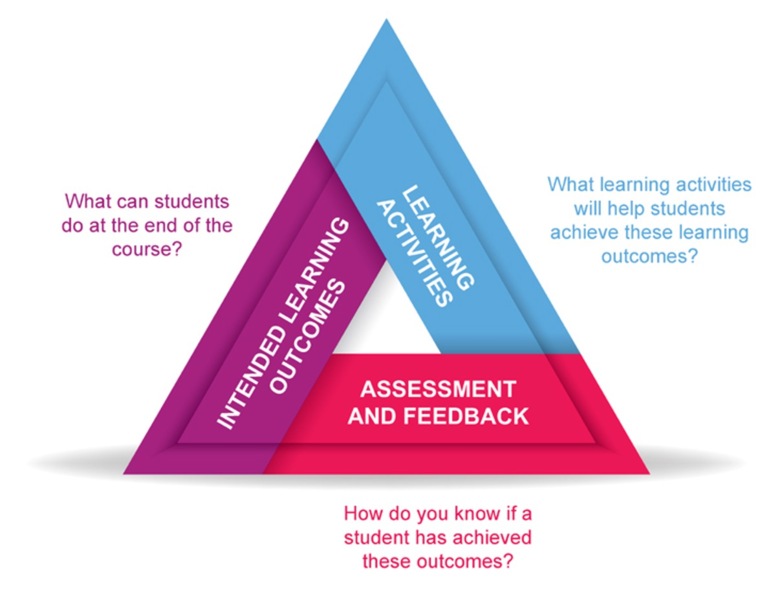Intended learning outcomes
Clear and constructively aligned learning outcomes provide the foundation of effective course design and curriculum design. This page is aimed at helping educators understand learning outcomes, as well as providing further resources to aid in writing effective learning outcomes.
Why write Intended Learning Outcomes (ILOs)?
Learning outcomes identify for students (and for the course leader and other teaching staff) the minimum requirements to award a module. That is, ILOs describe the specific intellectual and practical skills students require to be awarded a pass for the unit.
ILOs must be CLEAR: Constructively aligned, Learning-focussed, Equitable, Assessable, and Relevant (Lyons, Hannon & Carter, 2014).

What are Intended Learning Outcomes (ILOs)?
Intended learning outcomes (ILOs) are statements which together describe what a student is expected to know, understand, and/or be able to do at the end of a module or course at a specified level.
ILOs establish a foundation upon which the rest of the learning is built:
- Assessment tasks (ATs) are designed to measure student achievement of ILOs;
- Teaching and learning activities (TLAs) are designed to teach students what they need so they can complete the assessment tasks and demonstrate achievement of the ILOs;
- Content and materials are chosen to support student engagement in, and completion of, learning activities that will help them to achieve the ILOs.
Learning outcomes can be used for comparison and for quality assurance, both at the institution concerned (at module, course and programme level) and nationally and internationally.
Learning outcomes describe what a learner is expected to know, understand and be able to demonstrate after completion of a process of learning.

How do ILOs support quality?
At the course and curriculum levels, learning outcomes increase transparency, credibility and comparability of quality assurance standards.
ILOs help you:
Focus on student learning:
- Student learning becomes central when the focus is on what the student should be able to achieve by the end of a course;
- It is not the educators and their teaching, but student learning that is of primary interest;
- The vital task for educators is to facilitate and support this learning.
Connect outcomes, teaching, and assessment:
- Assessment determines what, how, and when the student studies and it must therefore be aligned with ILOs.
- This is facilitated by the fact that the ILOs are observable and measurable;
- This alignment is essential for effective student learning;
- It is easier to plan teaching to facilitate learning when ILOs are concrete and student-focused.
Improve the quality of teaching and learning
- It is easier to examine the fulfilment of ILOs if they are concrete;
- ILOs are linked to course evaluations, and allow you to monitor teaching and learning.
Learning outcomes should be developed with care and sensitivity… narrow and limiting learning outcomes are not appropriate for higher education where creativity and imaginative leaps are highly valued.
Related educational resources
 Photo: Anneliese Lilienthal
Photo: Anneliese LilienthalThe view from here
This section brings together diverse perspectives from medical admissions experts around the world. Listen to lived experiences, local innovations, and global reflections that challenge assumptions and inspire new thinking in admissions thinking.
